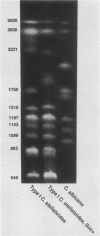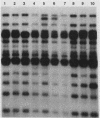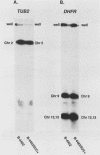Abstract
When type I Candida stellatoidea is plated onto sucrose agar at levels in excess of 10(8) cells, some isolates spontaneously form sucrose-positive colonies. These isolates do not display typical type I phenotypes but instead exhibit phenotypes intermediate between type I C. stellatoidea and C. albicans. Also, this phenotypic change only occurs in conjunction with a chromosomal rearrangement. These rearrangements have been studied in a strain naturally marked for methionine auxotrophy. Chromosome-size DNA bands separated by pulsed-field gel electrophoresis were probed with genes cloned from C. albicans. The hybridization pattern indicated that the genes on several chromosomes underwent extensive rearrangement.
Full text
PDF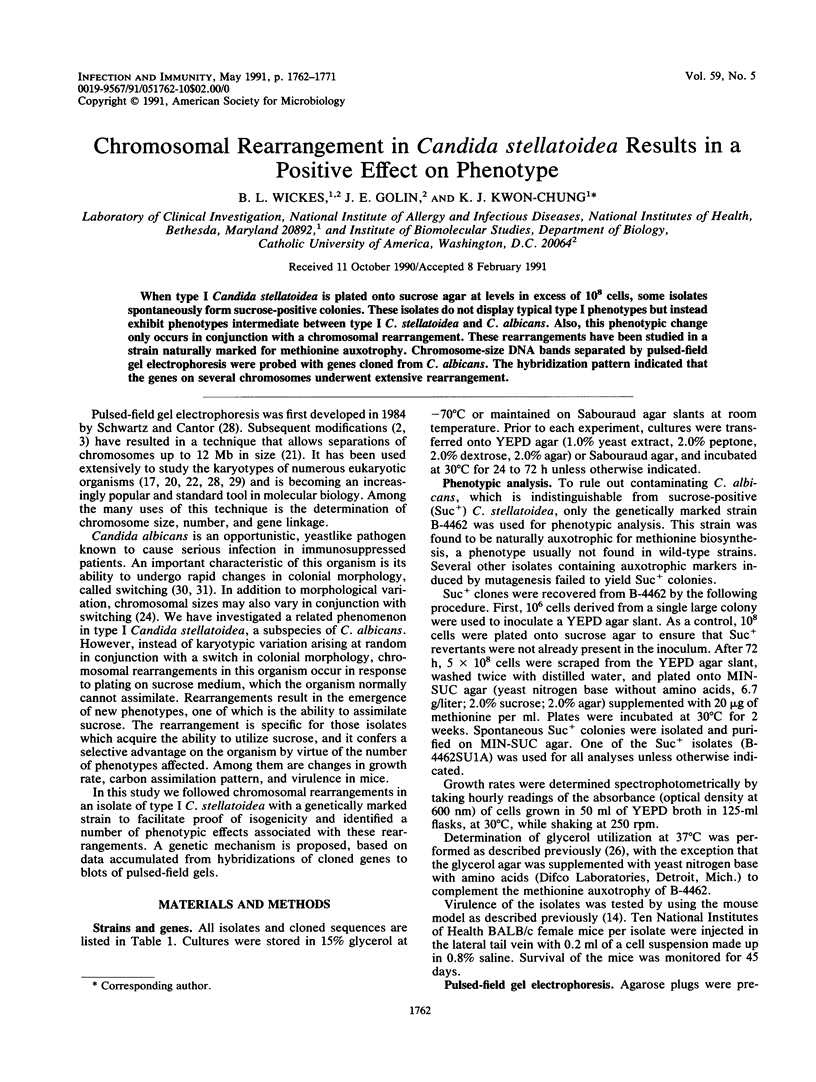
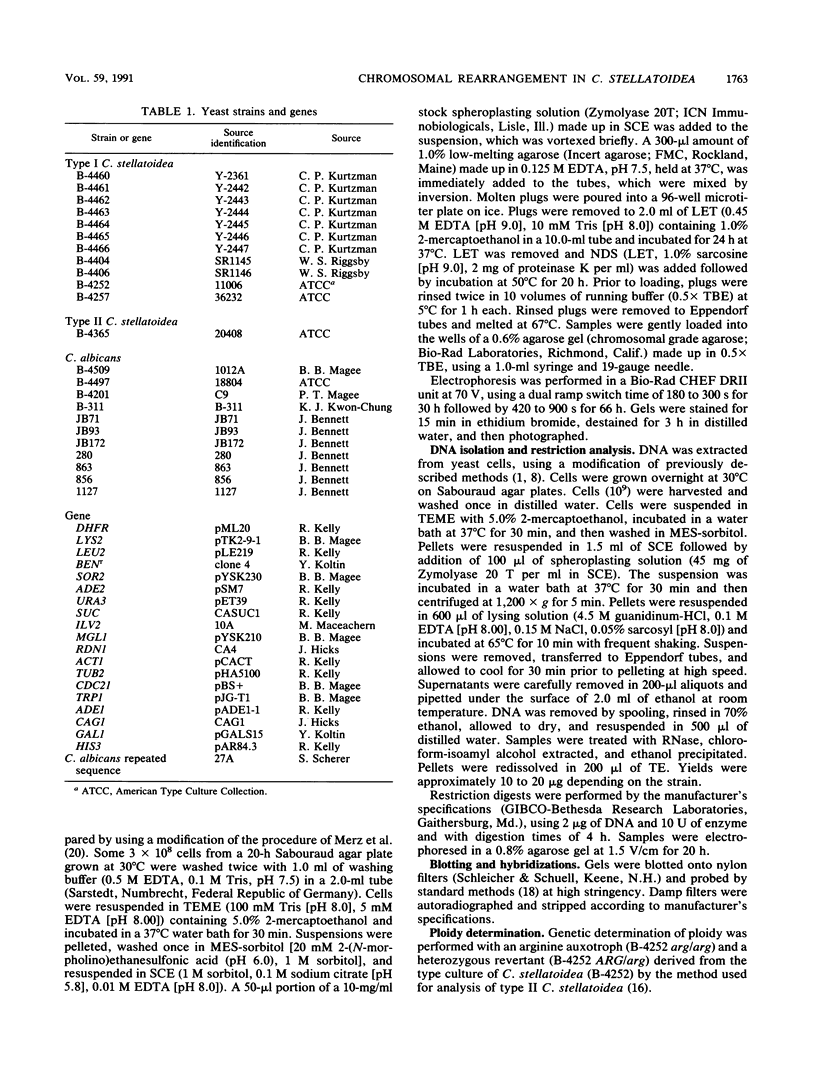
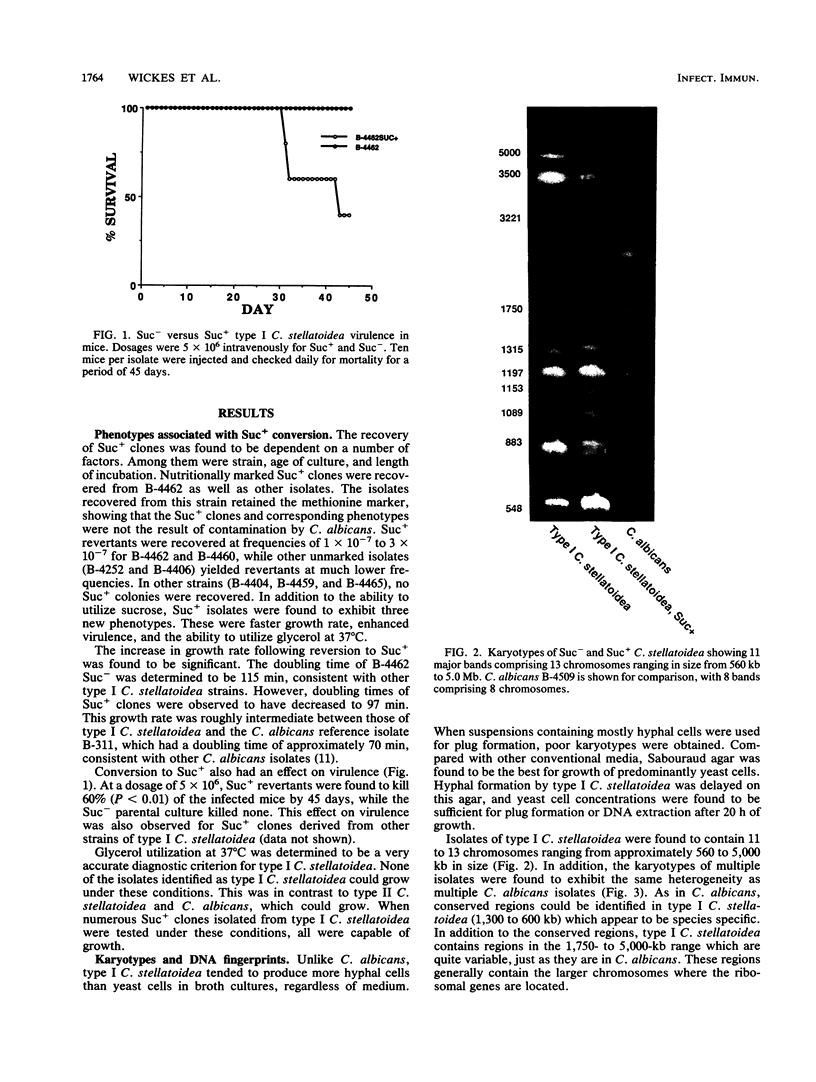
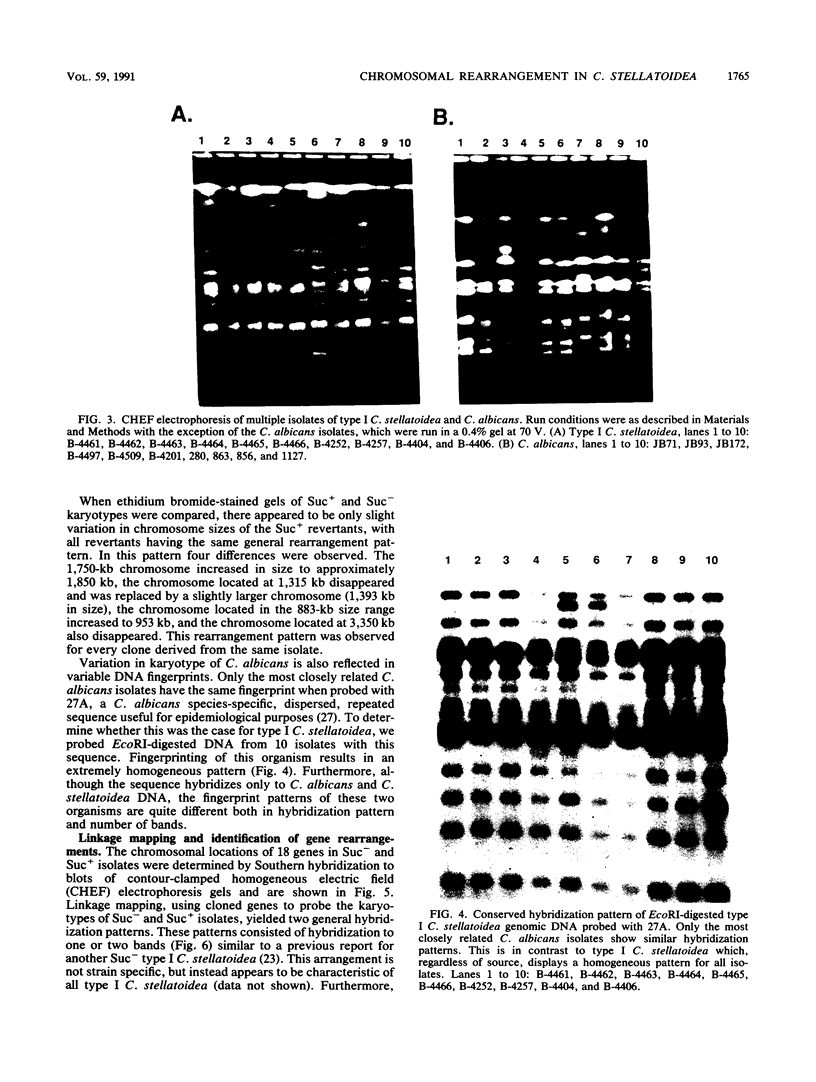
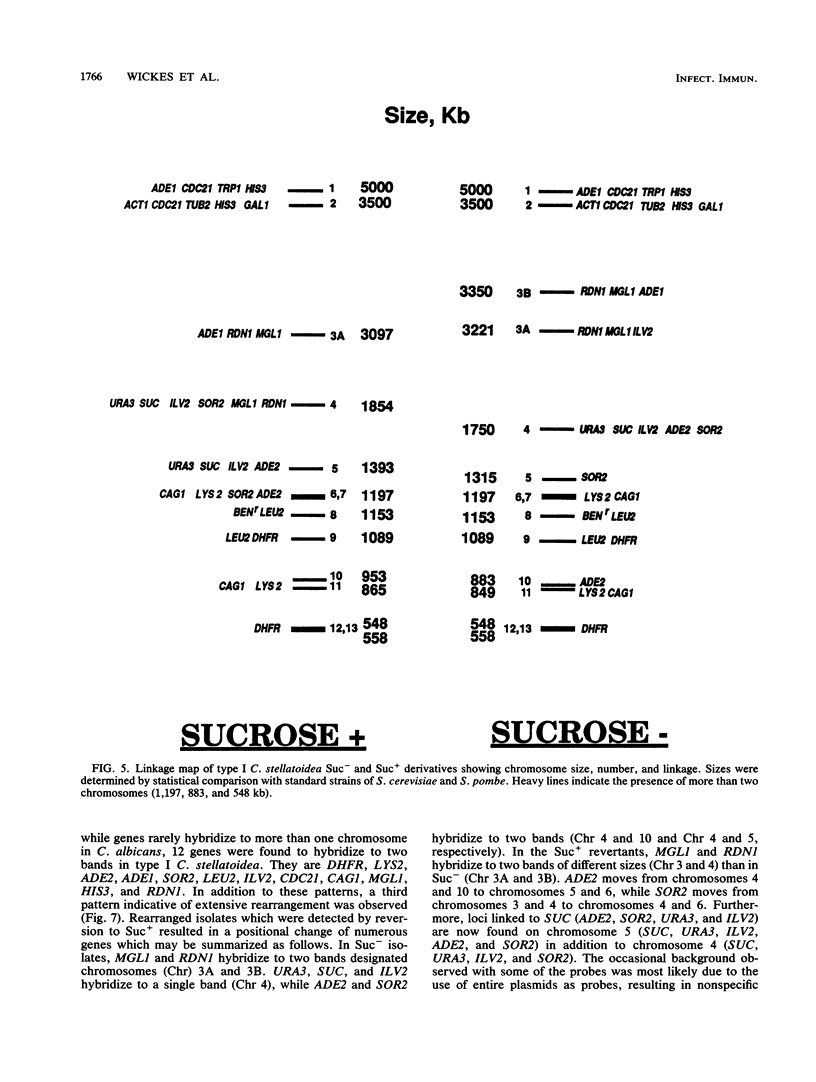
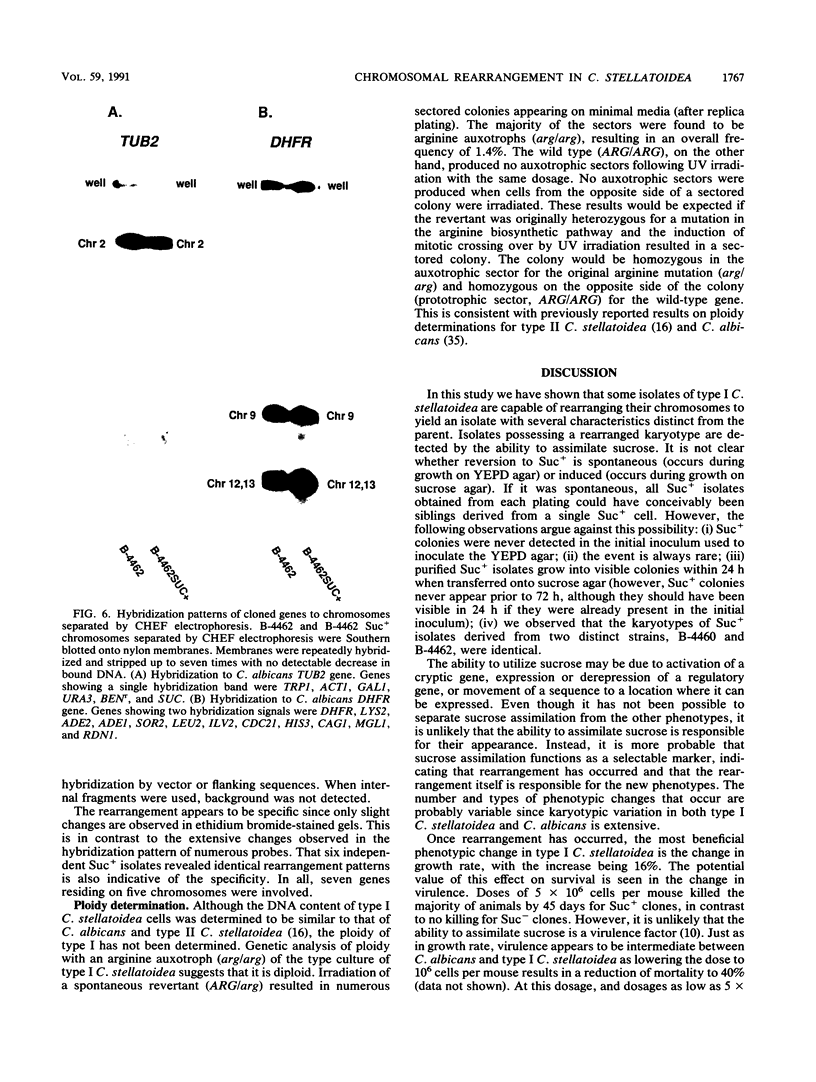
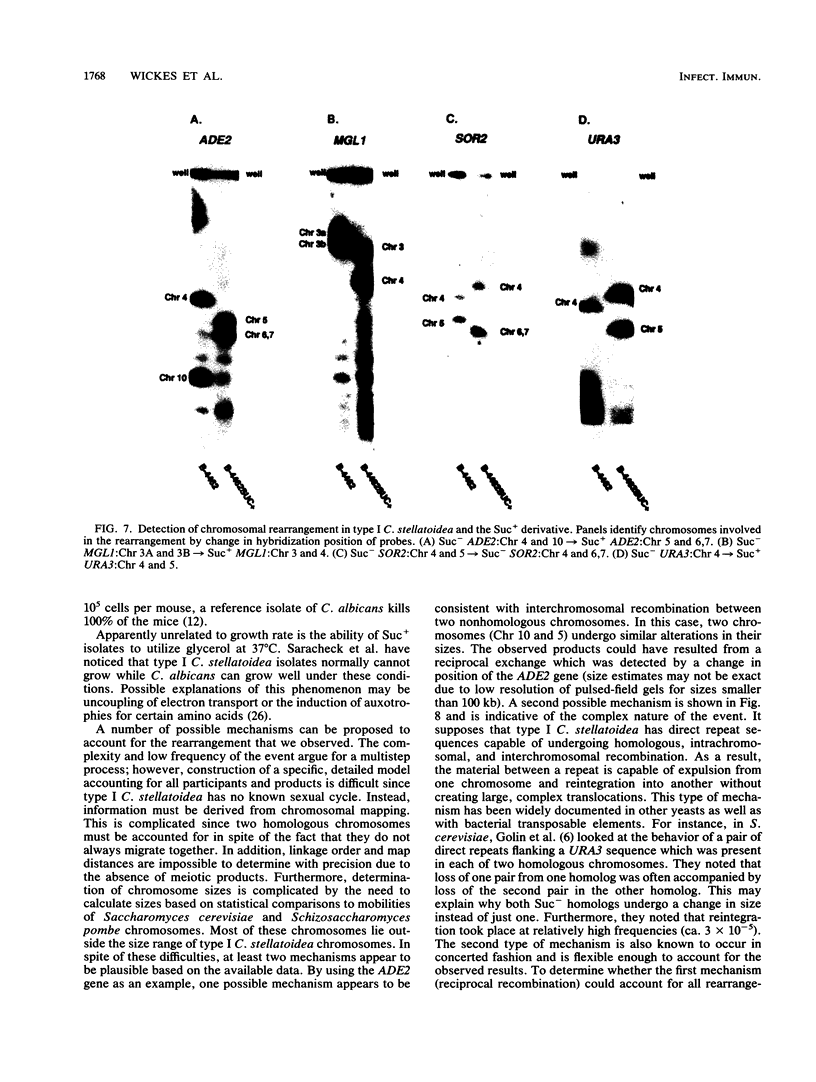
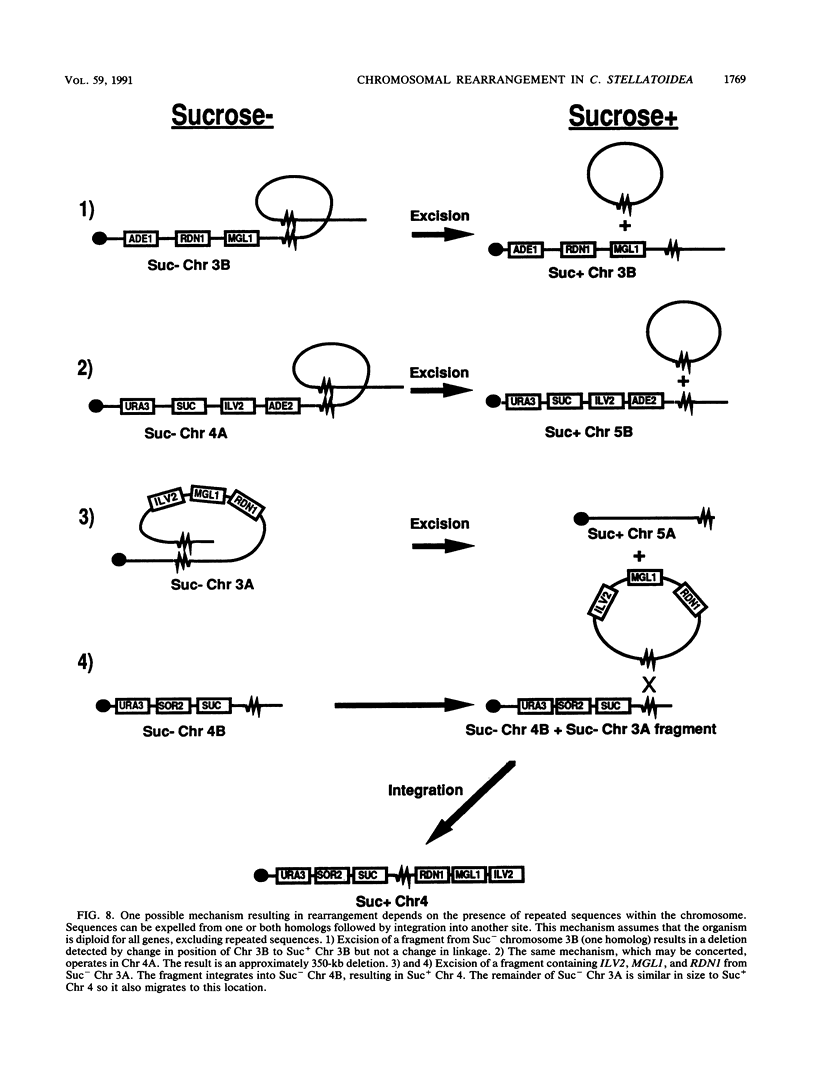
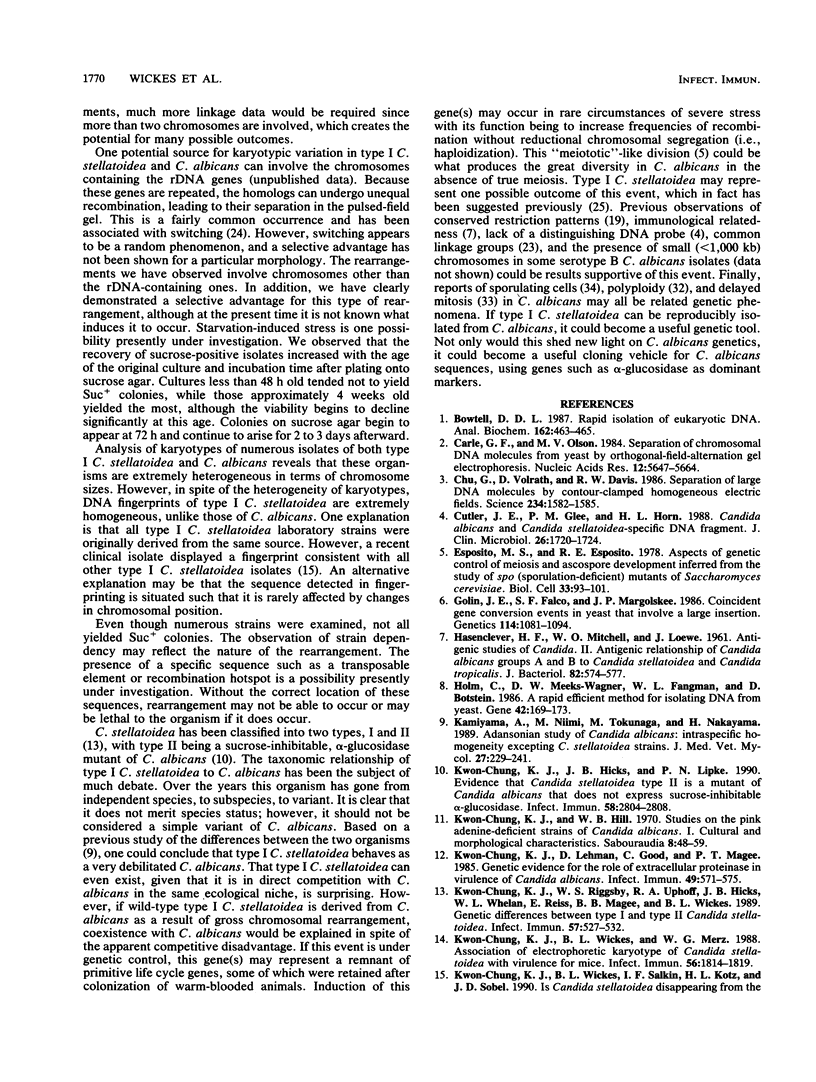
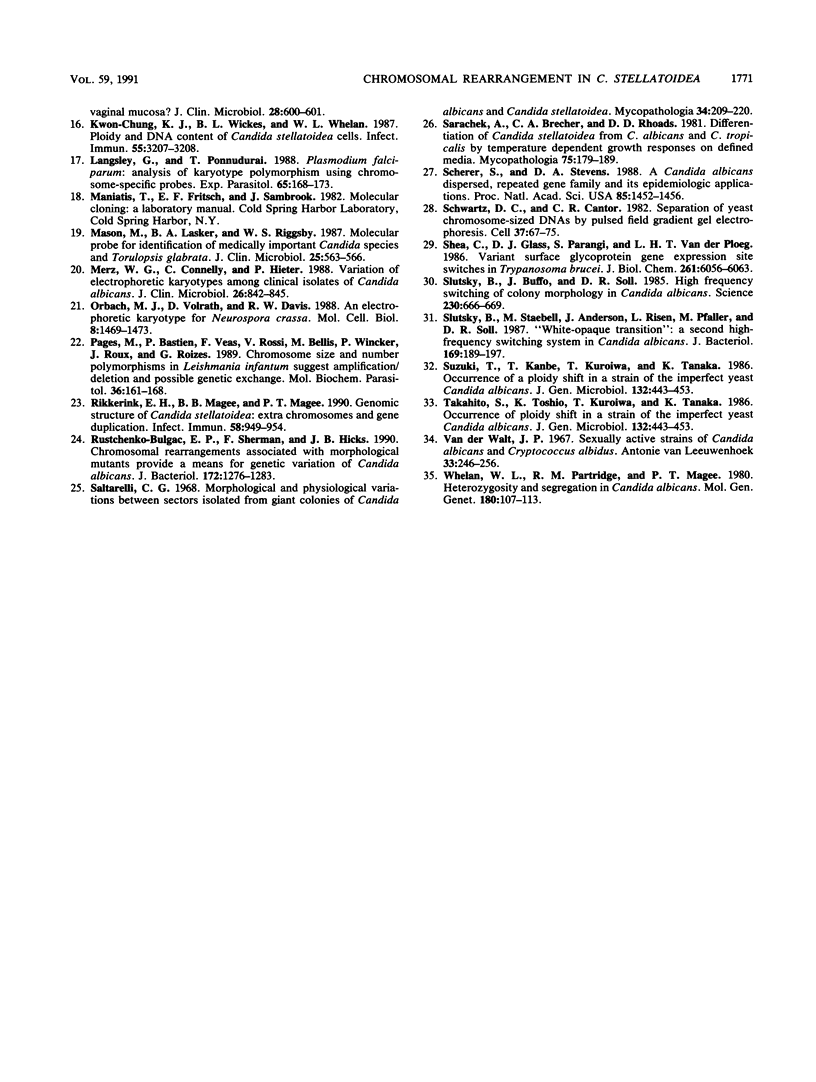
Images in this article
Selected References
These references are in PubMed. This may not be the complete list of references from this article.
- Bowtell D. D. Rapid isolation of eukaryotic DNA. Anal Biochem. 1987 May 1;162(2):463–465. doi: 10.1016/0003-2697(87)90421-0. [DOI] [PubMed] [Google Scholar]
- Carle G. F., Olson M. V. Separation of chromosomal DNA molecules from yeast by orthogonal-field-alternation gel electrophoresis. Nucleic Acids Res. 1984 Jul 25;12(14):5647–5664. doi: 10.1093/nar/12.14.5647. [DOI] [PMC free article] [PubMed] [Google Scholar]
- Chu G., Vollrath D., Davis R. W. Separation of large DNA molecules by contour-clamped homogeneous electric fields. Science. 1986 Dec 19;234(4783):1582–1585. doi: 10.1126/science.3538420. [DOI] [PubMed] [Google Scholar]
- Chung K. J., Hill W. B. Studies on the pink, adenine-deficient strains of Candida albicans. I. Cultural and morphological characteristics. Sabouraudia. 1970 May;8(1):48–59. [PubMed] [Google Scholar]
- Cutler J. E., Glee P. M., Horn H. L. Candida albicans- and Candida stellatoidea-specific DNA fragment. J Clin Microbiol. 1988 Sep;26(9):1720–1724. doi: 10.1128/jcm.26.9.1720-1724.1988. [DOI] [PMC free article] [PubMed] [Google Scholar]
- Golin J. E., Falco S. C., Margolskee J. P. Coincident gene conversion events in yeast that involve a large insertion. Genetics. 1986 Dec;114(4):1081–1094. doi: 10.1093/genetics/114.4.1081. [DOI] [PMC free article] [PubMed] [Google Scholar]
- HASENCLEVER H. F., MITCHELL W. O., LOEWE J. Antigenic studies of Candida. II. Antigenic relation of Candida albicans group A and group B to Candida stellatoidea and Candida tropicalis. J Bacteriol. 1961 Oct;82:574–577. doi: 10.1128/jb.82.4.574-577.1961. [DOI] [PMC free article] [PubMed] [Google Scholar]
- Holm C., Meeks-Wagner D. W., Fangman W. L., Botstein D. A rapid, efficient method for isolating DNA from yeast. Gene. 1986;42(2):169–173. doi: 10.1016/0378-1119(86)90293-3. [DOI] [PubMed] [Google Scholar]
- Kamiyama A., Niimi M., Tokunaga M., Nakayama H. Adansonian study of Candida albicans: intraspecific homogeneity excepting C. stellatoidea strains. J Med Vet Mycol. 1989;27(4):229–241. [PubMed] [Google Scholar]
- Kwon-Chung K. J., Hicks J. B., Lipke P. N. Evidence that Candida stellatoidea type II is a mutant of Candida albicans that does not express sucrose-inhibitable alpha-glucosidase. Infect Immun. 1990 Sep;58(9):2804–2808. doi: 10.1128/iai.58.9.2804-2808.1990. [DOI] [PMC free article] [PubMed] [Google Scholar]
- Kwon-Chung K. J., Lehman D., Good C., Magee P. T. Genetic evidence for role of extracellular proteinase in virulence of Candida albicans. Infect Immun. 1985 Sep;49(3):571–575. doi: 10.1128/iai.49.3.571-575.1985. [DOI] [PMC free article] [PubMed] [Google Scholar]
- Kwon-Chung K. J., Riggsby W. S., Uphoff R. A., Hicks J. B., Whelan W. L., Reiss E., Magee B. B., Wickes B. L. Genetic differences between type I and type II Candida stellatoidea. Infect Immun. 1989 Feb;57(2):527–532. doi: 10.1128/iai.57.2.527-532.1989. [DOI] [PMC free article] [PubMed] [Google Scholar]
- Kwon-Chung K. J., Wickes B. L., Merz W. G. Association of electrophoretic karyotype of Candida stellatoidea with virulence for mice. Infect Immun. 1988 Jul;56(7):1814–1819. doi: 10.1128/iai.56.7.1814-1819.1988. [DOI] [PMC free article] [PubMed] [Google Scholar]
- Kwon-Chung K. J., Wickes B. L., Salkin I. F., Kotz H. L., Sobel J. D. Is Candida stellatoidea disappearing from the vaginal mucosa? J Clin Microbiol. 1990 Mar;28(3):600–601. doi: 10.1128/jcm.28.3.600-601.1990. [DOI] [PMC free article] [PubMed] [Google Scholar]
- Kwon-Chung K. J., Wickes B. L., Whelan W. L. Ploidy and DNA content of Candida stellatoidea cells. Infect Immun. 1987 Dec;55(12):3207–3208. doi: 10.1128/iai.55.12.3207-3208.1987. [DOI] [PMC free article] [PubMed] [Google Scholar]
- Langsley G., Ponnudurai T. Plasmodium falciparum: analysis of karyotype polymorphism using chromosome-specific probes. Exp Parasitol. 1988 Apr;65(2):168–173. doi: 10.1016/0014-4894(88)90120-8. [DOI] [PubMed] [Google Scholar]
- Mason M. M., Lasker B. A., Riggsby W. S. Molecular probe for identification of medically important Candida species and Torulopsis glabrata. J Clin Microbiol. 1987 Mar;25(3):563–566. doi: 10.1128/jcm.25.3.563-566.1987. [DOI] [PMC free article] [PubMed] [Google Scholar]
- Merz W. G., Connelly C., Hieter P. Variation of electrophoretic karyotypes among clinical isolates of Candida albicans. J Clin Microbiol. 1988 May;26(5):842–845. doi: 10.1128/jcm.26.5.842-845.1988. [DOI] [PMC free article] [PubMed] [Google Scholar]
- Orbach M. J., Vollrath D., Davis R. W., Yanofsky C. An electrophoretic karyotype of Neurospora crassa. Mol Cell Biol. 1988 Apr;8(4):1469–1473. doi: 10.1128/mcb.8.4.1469. [DOI] [PMC free article] [PubMed] [Google Scholar]
- Pagès M., Bastien P., Veas F., Rossi V., Bellis M., Wincker P., Rioux J. A., Roizès G. Chromosome size and number polymorphisms in Leishmania infantum suggest amplification/deletion and possible genetic exchange. Mol Biochem Parasitol. 1989 Sep;36(2):161–168. doi: 10.1016/0166-6851(89)90188-6. [DOI] [PubMed] [Google Scholar]
- Rikkerink E. H., Magee B. B., Magee P. T. Genomic structure of Candida stellatoidea: extra chromosomes and gene duplication. Infect Immun. 1990 Apr;58(4):949–954. doi: 10.1128/iai.58.4.949-954.1990. [DOI] [PMC free article] [PubMed] [Google Scholar]
- Rustchenko-Bulgac E. P., Sherman F., Hicks J. B. Chromosomal rearrangements associated with morphological mutants provide a means for genetic variation of Candida albicans. J Bacteriol. 1990 Mar;172(3):1276–1283. doi: 10.1128/jb.172.3.1276-1283.1990. [DOI] [PMC free article] [PubMed] [Google Scholar]
- Sarachek A., Brecher C. A., Rhoads D. D. Differentiation of Candida stellatoidea from C. albicans and C. tropicalis by temperature-dependent growth responses on defined media. Mycopathologia. 1981 Sep 11;75(3):179–189. doi: 10.1007/BF00482814. [DOI] [PubMed] [Google Scholar]
- Scherer S., Stevens D. A. A Candida albicans dispersed, repeated gene family and its epidemiologic applications. Proc Natl Acad Sci U S A. 1988 Mar;85(5):1452–1456. doi: 10.1073/pnas.85.5.1452. [DOI] [PMC free article] [PubMed] [Google Scholar]
- Schwartz D. C., Cantor C. R. Separation of yeast chromosome-sized DNAs by pulsed field gradient gel electrophoresis. Cell. 1984 May;37(1):67–75. doi: 10.1016/0092-8674(84)90301-5. [DOI] [PubMed] [Google Scholar]
- Shea C., Glass D. J., Parangi S., Van der Ploeg L. H. Variant surface glycoprotein gene expression site switches in Trypanosoma brucei. J Biol Chem. 1986 May 5;261(13):6056–6063. [PubMed] [Google Scholar]
- Slutsky B., Buffo J., Soll D. R. High-frequency switching of colony morphology in Candida albicans. Science. 1985 Nov 8;230(4726):666–669. doi: 10.1126/science.3901258. [DOI] [PubMed] [Google Scholar]
- Slutsky B., Staebell M., Anderson J., Risen L., Pfaller M., Soll D. R. "White-opaque transition": a second high-frequency switching system in Candida albicans. J Bacteriol. 1987 Jan;169(1):189–197. doi: 10.1128/jb.169.1.189-197.1987. [DOI] [PMC free article] [PubMed] [Google Scholar]
- Suzuki T., Kanbe T., Kuroiwa T., Tanaka K. Occurrence of ploidy shift in a strain of the imperfect yeast Candida albicans. J Gen Microbiol. 1986 Feb;132(2):443–453. doi: 10.1099/00221287-132-2-443. [DOI] [PubMed] [Google Scholar]
- Whelan W. L., Partridge R. M., Magee P. T. Heterozygosity and segregation in Candida albicans. Mol Gen Genet. 1980;180(1):107–113. doi: 10.1007/BF00267358. [DOI] [PubMed] [Google Scholar]
- van der Walt J. P. Sexually active strains of Candida albicans and Cryptococcus albidus. Antonie Van Leeuwenhoek. 1967;33(3):246–256. doi: 10.1007/BF02045570. [DOI] [PubMed] [Google Scholar]



